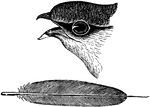
Chimney Swift Head and Feather
"Chaetura pelasgica. Chimney Swift. Chimney "Swallow". Sooty-brown, with a faint greenish gloss above;…

Common Swift Flying Through the Air by a Structure and a Tree with its Mouth Open
"The coloration of the twenty or more species of Cypselus is sooty-black or mouse-brown, frequently…

Northern Black Cloud Swift
"Nephaecetes niger borealis. Northern Black Cloud Swift. Entire plumage sooty-black, with slight greenish…
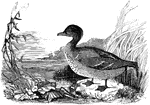
American Green-winged Teal
"Querquedula (N.) carolinensis. American Green-winged Teal. Bill black; feet bluish-gray: iris brown.…

Aleutian Tern
"Sterna aleutica. Aleutian Tern. Bill of ordinary shape, as in hirundo, macrura, etc., entirely black.…
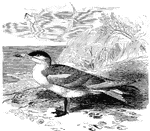
Caspian Tern
"Sterna (T.) caspia. Caspian Tern. Imperial Tern. Bill dark vermilion red, growing and somewhat "diaphanous"…

Common Tern
Sterna fluviatilis, the Common Tern, occupying the coasts and inland waters of Europe, temperate Asia,…
Elegant Tern
"Sterna (T.) elegans. Elegant Tern. Princely Tern. Bill bright red, salmon-colored toward tip. Feet…

Royal Tern
"Sterna (T.) maxima. Cayenne Tern. Royal Tern. Adult in summer: Pileum glossy greenish-black, not extending…

Sandwich Tern
"Sterna (T.) cantiaca. Sandwich Tern. Ducal Tern. Bill black, the tip 1/2 to 3/4 an inch bright yellow,…
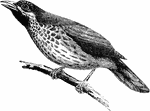
Babbling Thrush
"Timelia maculata, the Babbling Thrush, sexes are commonly alike, the plain rufous coloration being…
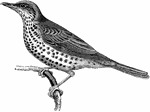
Mistletoe Thrush
"Turdus viscivorus, Mistletoe Thrush, the coloration is ordinarily plain black or brown, more or less…

Wood Thrush
"Wood Thrush. Upper parts, including the surface of the closed wings, tawny-brown, purest and deepest…
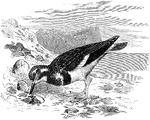
Turnstone
"Strepsilas interpres. Turnstone. Brant Bird. Calico-back. Pied above with black, white, brown, and…
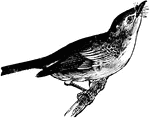
Warbling Vireo
"Similar to V. gilvus, but smaller; colors paler; bill more depressed; upper mandible almost black;…
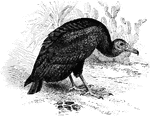
Black Vulture
"Catharista atrata. Black Vulture. Carrion Crow. Adult: Entire plumage, including skin of head, and…
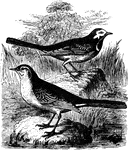
A White and Yellow Wagtail Sitting on the Rocks
A (Motacilla alba) or White Wagtail (upper) and a (Motacilla flava) Yellow Wagtail (lower) sitting on…

Yellow Wagtail Head and Foot
"The Yellow Wagtail or Motilla flava has characters of the Motacilla alva; tail shorter, not exceeding…
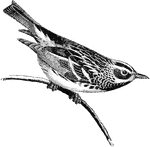
Black and White Warbler
"Mniotilta varia, the Black and White Warbler, The general coloration is olive-green, grey, or slaty-blue,…
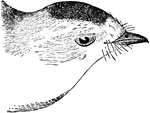
Black-capped Fly-catching Warbler
"Myiodioctes pussies. Blacked-capped Fly-catching Warbler. Upper parts, including exposed edging of…
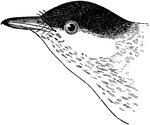
Black -poll Warbler
"Black-poll Warbler or Dendroica striata. Back, rump, tail-coverts grayish-olive, heavily streaked with…
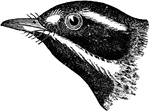
Black-throated Gray Warbler
"Black-throated Gray Warbler or Dendroica nigrescens. Above, bluish-ash, the interscapular region, and…
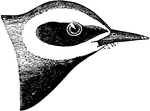
Blue Golden-Winged Warbler
"Blue Golden-Winged Warbler or Helminthophila chrysoptera. Upper parts slaty-blue, or or fine bluish-gray;…
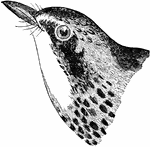
Canada Warbler
"Myiodioctes canadensis. Canadian Fly-catching Warbler. Canada Warbler. Bluish-ash; crown speckled with…
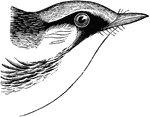
Chestnut-sided Warbler
"Chestnut-sided Warbler, Dendroica pensylvanica. Back streaked with black and pale yellow (sometimes…
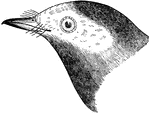
Hooded Warbler
"Myiodioctes mitratus. Hooded Fly-catching Warbler. Hooded Warbler. Clear yellow-olive above; below,…
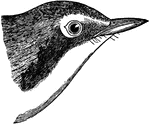
Kentucky Warbler
"Kentucky Warbler. Oporornis formosus. Clear olive-green; entire under parts bright yellow, olive-shaded…

Magnolia Warbler
"Black -and-Yellow Warbler. Magnolia Warbler. Back black, usually quite pure and uninterrupted in the…

Worm-Eating Warbler
"Worm-Eating Warbler or Helmitheros vermivorus. Olive, below buffy, paler or whitish on the belly; head…

Yellow-rumped Warbler
"Yellow-rumped Warbler or Dendroica coronata. Yellow-crowned Warbler. Myrtle Bird. Slaty-blue, streaked…
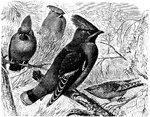
Bohemian Waxwing
"Ampelis garrulus. Bohemian Waxwing. General color brownish-ash, shading insensibly from the clear ash…
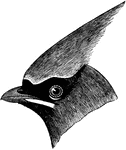
Cedar Waxwing
"Ampelis cedrorum. Cedar Waxwing. Carolina Waxwing. Cedar-bird. Cherry Bird. General color shading from…
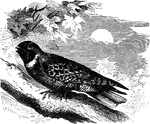
Large Whippoorwill
"Antrostomus vociferus. Whippoorwill. Night-jar. Upper parts variegated with gray, black, whitish, and…

Small Whippoorwill
"Antrostomus vociferus. Whippoorwill. Night-jar. Upper parts variegated with gray, black, whitish, and…

Woodcock
"Scolopas rusticula, the well known Woodcock, brown, grey, and buff in color, with blackish vermiculations…

American Woodcock Head
"Philohela. American Woodcock. First three primaries emarginate, attenuate and falcate, abruptly shorter…
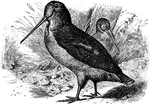
American Woodcock
"Philohela minor. Woodcock. Bog-sucker. Colors above harmoniously blended and varied black, brown, gray,…
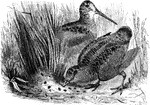
Probing American Woodcock
"Philohela minor. Woodcock. Bog-sucker. Colors above harmoniously blended and varied black, brown, gray,…
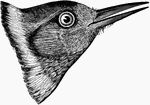
Lewis' Woodpecker Head
"Asyndesmus torquatus. Lewis' Woodpecker. Lared Woodpecker. Adult: Upper parts, including wings and…
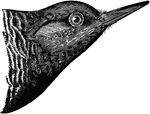
Brown-headed Woodpecker
"Sphyropicus thyroides. Brown-headed Woodpecker. Black-breasted Woodpecker. Red-throated Woodpecker.…

Hairy Woodpecker
"Picus villosus. Hairy Woodpecker. Spotted and lengthwise streaked, but not banded. Usually 9-10 long;…
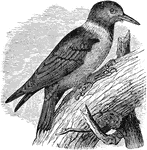
Lewis' Woodpecker
"Asyndesmus torquatus. Lewis' Woodpecker. Lared Woodpecker. Adult: Upper parts, including wings and…

Red-headed Woodpecker
"Melanerpes erythrocephalus. Red-headed Woodpecker. Tricolor. Adult: Beautifully tricolor with "the…
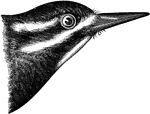
Red-headed Woodpecker
"Sphyropicus thyroides. Brown-headed Woodpecker. Black-breasted Woodpecker. Red-throated Woodpecker.…
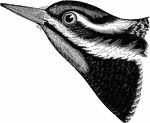
Yellow-bellied Woodpecker
"Sphyropicus varius. Yellow-bellied Woodpecker. Male: Crown crimson, bordered all around with black;…

Rock Wren
"Upper parts pale brownish-gray, minutely dotted with blackish and whitish points together, and usually…

Short-billed Marsh Wren
"Short-billed Marsh Wren. Cistothorus platensis. Upper parts brown, the crown and most of the back blackish,…

Greater Yello-shanks
"Totanus melanoleucus. Greater Tell-tale. Greater Yellow-shanks. Long-legged Tattler. Stone-snipe. Bill…
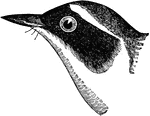
Common Yellowthroat
"Geothlypis trichas. Common Yellowthroat. Yellow-throated Ground Warbler. Maryland Yellow-throat. Upper…